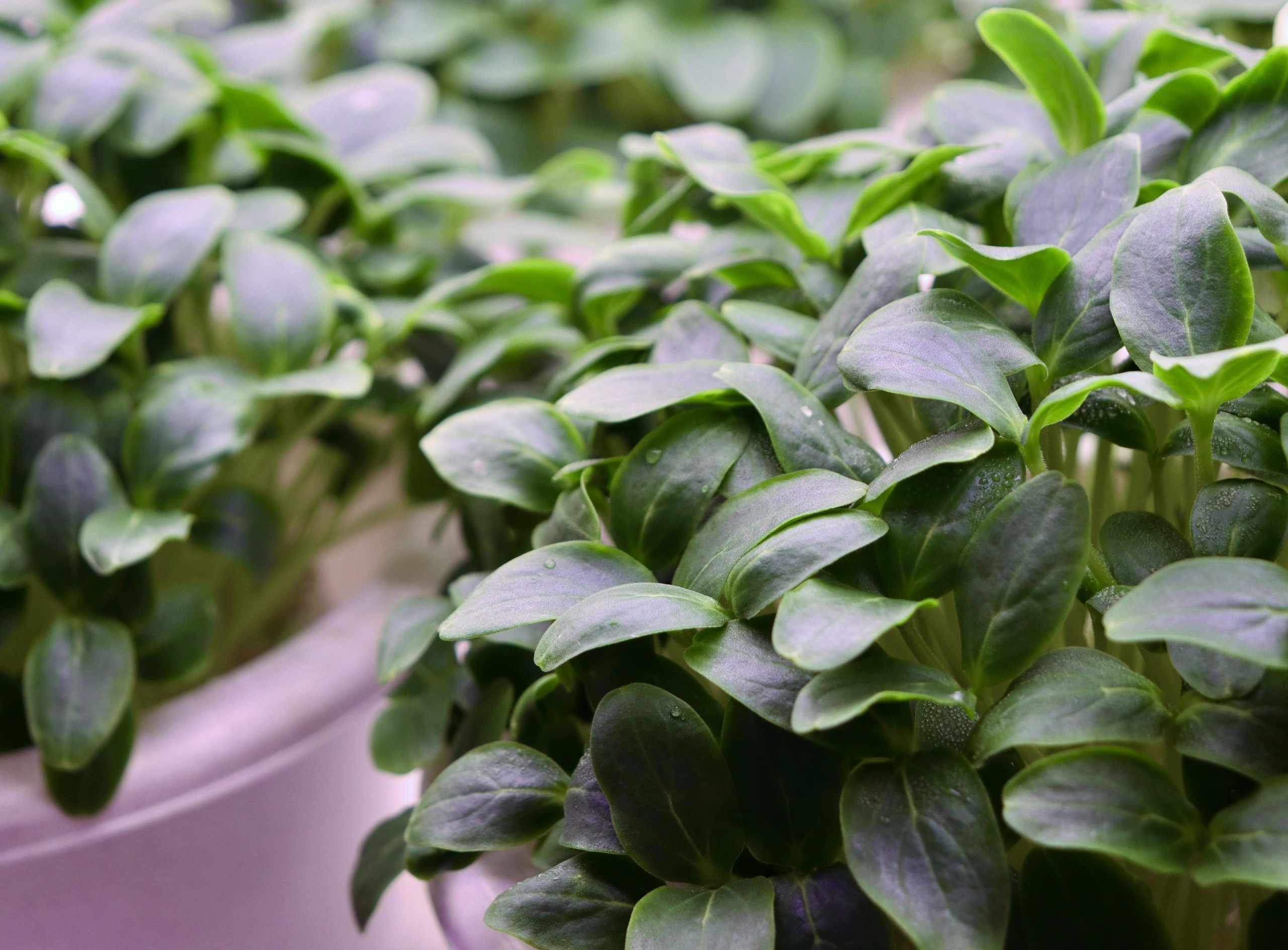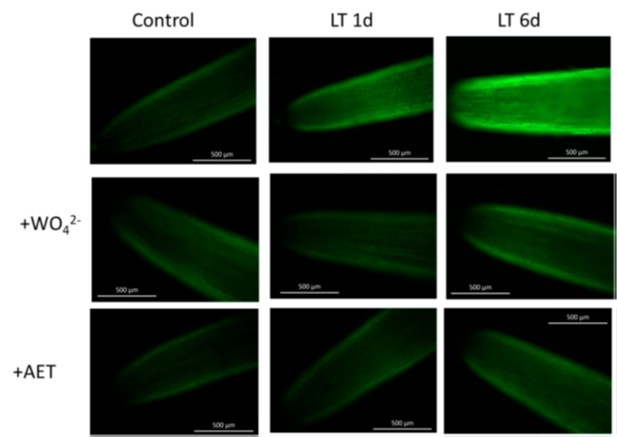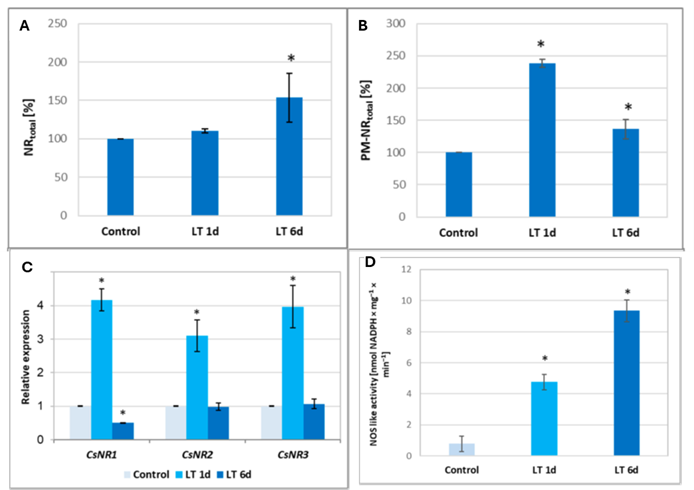
Unexpected cold attack – how do plants cope?
Unpredictable temperature fluctuations, especially drops, are a common phenomenon in the temperate climate zone. Cold stress, which includes chilling (0-15 °C) and freezing (below 0 °C), is one of the most harmful abiotic factors limiting the growth and yield of many plants. Particularly sensitive to such temperature changes are thermophilic plants cultivated in our climate zone, including the common cucumber (Cucumis sativus L.).
Throughout their lives, plants are constantly exposed to adverse environmental factors. Due to their nature and way of life, plants cannot move to seek shelter or escape an emerging threat. They must adapt to the current conditions in a flexible manner. To this end, they utilize a range of inorganic molecules acting as signals that trigger entire pathways of reactions in cells, enabling plants to adapt to environmental changes. One such molecule is nitric oxide (II), or NO.
Earlier studies, conducted by employees of the Department of Molecular Physiology of Plants of the Faculty of Biological Studies at the University of Wrocław: dr hab. Małgorzata Reda, prof. UWr, dr. hab. Katarzyna Kabała, prof. UWr, and dr hab. Małgorzata Janicka, prof. UWr, have shown that the level of NO in cucumber increases in response to various environmental factors, including salinity, heavy metals, and low temperature. However, knowledge about the pathways involved in the increased production of NO in plants under cold stress conditions is still limited. Therefore, the aim of further research was to determine the contribution of individual endogenous sources of NO in the production of this molecule in the roots of cucumber seedlings exposed to cold.
NO is an inorganic gas with a low molecular weight that easily crosses biological membranes and moves rapidly over long distances. NO exhibits high biological activity not only in plants but also in animals. Its biological functions were initially discovered in humans. This occurred in the late 1970s during research on the effects of cardiac medications, and in the late 1980s, NO was identified as a vasodilator produced in the endothelium of blood vessels. This discovery was recognized as one of the greatest achievements of biology in the 20th century, and in 1998, the research leading to the discovery of NO and its functions in humans was awarded the Nobel Prize in Physiology and Medicine (Louis J. Ignarro, Robert Furchgott, and Ferid Murad). The scientific world’s interest in nitric oxide is also evidenced by the fact that in 1992, Science magazine named NO “molecule of the year.”
In the human body, in addition to its relaxing and vasodilating effects on blood vessels, NO acts as a neurotransmitter in the central nervous system and, very importantly, as a mediator and indicator in the course of many diseases and inflammatory conditions of the body. In this context, the functions of NO in humans coincide with the functions of this factor in plants, for which NO, along with other molecules, is a kind of sensor of stress caused by adverse changes occurring in the environment.
Due to the roles that NO plays in various organisms, intensive research is being conducted on the endogenous biosynthesis of this gas, as well as monitoring its levels under stress conditions. The production of NO in living organisms can occur through various pathways. One of them is the so-called oxidative pathway, mediated by the enzyme nitric oxide synthase (NOS). This pathway functions in humans and other mammals, where NO is produced in the vascular endothelium, macrophages, and synaptic terminals of nerve cells. Despite over two decades of research, a NOS protein or a gene homologous to its mammalian counterparts has not yet been identified in plants. This enzyme is a kind of Holy Grail in research on NO production in plant cells. Although there is no evidence for the presence of NOS, changes in NO levels sensitive to specific inhibitors that inhibit the activity of the mammalian enzyme are observed in plants, indicating that NOS-like activity also occurs in plant cells.
The second pathway of NO biosynthesis is the reductive pathway, involving the reduction of nitrites to NO. The reaction is catalyzed by various enzymes. Among these, the most important in plants is nitrate reductase (NR), an enzyme primarily involved in the reduction of nitrates, which is the first step in the process of assimilating inorganic nitrogen into organic compounds. Recently, literature has reported that NO production in the model alga Chlamydomonas may also be catalyzed by another protein, called ARC protein. Its function has not yet been unequivocally confirmed in higher plants, including cucumber.
Research conducted by the researchers from ZFMR together with graduates has shown that various biosynthesis pathways of this molecule may be involved in the production of NO in the roots of plants exposed to cold. They treated week-old cucumber seedlings with a temperature of 10°C for a short (1 day) and long (6 days) period. This temperature induces stress symptoms in cucumber. Subsequently, they measured the level of NO in the roots of these plants, which increased significantly under the influence of cold. When inhibitors blocking the activity of NO-producing enzymes, namely NR and NOS, were introduced into the nutrient solution, no increased production of this gas was observed during cold treatment (Fig. 1).

In plants treated with cold, the enzymatic activity of NR also increased, both the form present in the cytoplasm and the form associated with the cell membrane, and there was an increase in the expression of genes (CsNR1-3) encoding this protein in cucumber. Furthermore, NOS-like activity increased in the roots of plants treated with cold. It is worth noting that the duration of low temperature exposure was significant. During short-term colds, the expression of CsNR 1-3 genes responsible for NR protein production was strongly activated, and the activity of NR associated with the cell membrane was stimulated. In contrast, during long-term exposure of plants to low temperature, the cytoplasmic form of NR was highly active, and NOS-like activity increased (Fig. 2).

These results indicate that at different stages of cold stress, plants activate different pathways, both reductive and oxidative, responsible for the production of this signaling molecule.
As part of the ongoing research, the potential involvement of the ARC protein in the process of NO generation in cucumber roots was also analyzed. Work began with the identification of the gene encoding ARC in the genome of this species. The search was carried out as part of a bachelor’s thesis completed under the supervision of dr hab. M. Reda. One coding sequence was identified, and a bioinformatic analysis of both the identified gene sequence and its protein product was performed. These results enabled the analysis of CsARC gene expression in seedlings exposed to low temperature, which was part of the research carried out as part of a master’s thesis under the supervision of dr hab. M. Reda. A very clear increase in CsARC expression was observed in the roots of plants subjected to long-term, 6-day cold treatment, which may suggest a potential role of the ARC protein in the mechanisms of cucumber adaptation to low temperature.
The results of research conducted by the ZFMR team significantly expand the current knowledge about plant responses to stress. The perception of environmental stimuli, including cold, primarily occurs at the level of the cell membrane. Exposure to cold causes structural and qualitative changes in this membrane. Therefore, in the first stage of the cucumber root response to low temperature, the NO production system associated with this cellular component is activated. The increase in NO level then triggers subsequent stages of cold-induced signal transduction. Defense mechanisms are activated, leading to increased expression of relevant genes, including those encoding NR. Consequently, increased activity of the cytoplasmic form of NR is observed in the case of long-term cold. Moreover, under these conditions, the plant modifies its metabolism and activates other pathways, such as NO production via the oxidative route.
Currently, research is being conducted at ZFMR to determine the function of ARC in cucumber. As part of a recently completed internal grant from the University of Wrocław, funded in the III edition of the Internal Grants competition from the “Excellence Initiative – Research University” program („Inicjatywa Doskonałości – Uczelnia Badawcza”), dr hab. prof. M. Reda selected oligonucleotide sequences leading to the inhibition or increase of CsARC expression in cucumber seedlings. In the future, this will allow for further research on the functions of ARC in plants with modified levels of this protein in tissues.
The results of the described research were published in the paper:
Reda, M.; Kabała, K.; Stanisławski, J.; Szczepski, K.; Janicka, M. Regulation of NO-Generating System Activity in Cucumber Root Response to Cold. Int. J. Mol. Sci. 2025, 26, 1599. https://doi.org/10.3390/ijms26041599
Bibliography:
Kumar S, Singh RK, Bhardwaj TR, Therapeutic role of nitric oxide as emerging molecule, Biomedicine & Pharmacotherapy 85 (2017) 182–201, doi.org/10.1016/j.biopha.2016.11.125
Translated by Natalia Perlic (student of English Studies at the University of Wrocław) as part of the translation practice.
Date of publication: 16.04.2025
Added by: E.K.



